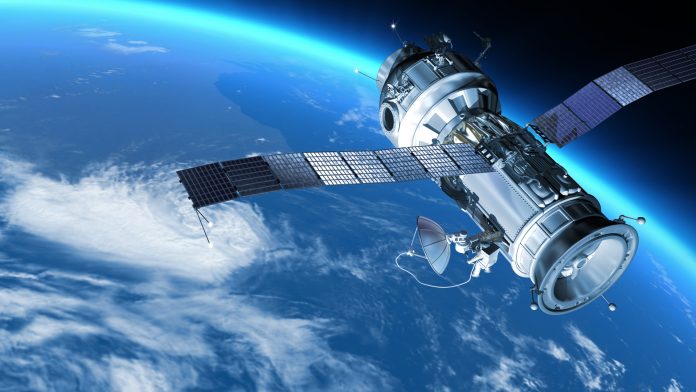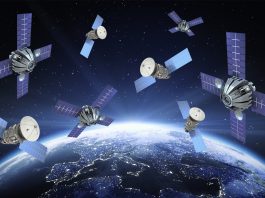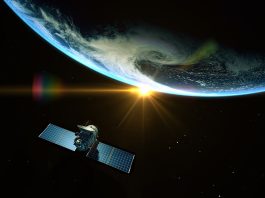The Innovation Platform speaks to ESA Director of Operations Rolf Densing about deorbiting space debris to avoid overcrowding in space.
In almost 60 years of space activities, more than 5,450 launches have resulted in some 42,000 tracked objects in orbit, of which approximately 23,000 remain. Around 24% of the catalogued objects are satellites (less than a third of which are operational), and approximately 18% are spent upper stages and mission-related objects such as launch adapters and lens covers.
At the 12th European Space Conference in Brussels, Director of Operations at ESA Rolf Densing appeared on the plenary session ‘Security in Space: a European or International approach to Space Traffic Management, SST/SSA and Cybersecurity’.
At the conference, Densing spoke to The Innovation Platform (TIP) about ESA’s role in addressing debris in space and the presence of NEOs.
What is ESA doing to address the problem of space debris?
At ESA we are operating a fleet of around 20 to 25 satellites and so, of course, we are subject to near encounters with other satellites. There are currently 4,500 satellites in space, but only ~1,800 are operational. And yet the world will soon witness the deployment of the Starlink constellation by SpaceX. This will see the launch of 10,000 satellites by the mid-2020s and this is a huge increase in the number of satellites currently in orbit and so will potentially pose a significant issue when it comes to collisions and collision avoidance – especially when it is noted that at ESA at the moment we have more than 100 collision warnings a day. Of course, actual collisions happen very rarely, but we fly a collision avoidance manoeuvre every two weeks or so, and that is something that we try not to do unless we have to because it is done at the expense of on-board fuel resources, which are finite.
The European Space Operations Centre (ESOC) has been operating satellites for more than 50 years, so we have a good understanding of what is going on. But things are changing. That is one of the reasons why we launched a collision avoidance challenge. Here, we uploaded our historic data on collision warnings and asked the expert community worldwide to backwards engineer collision avoidance data by means of machine learning and artificial intelligence. The winner will, we hope, go on to have a very good commercial perspective – if you can come up with a smart way to reduce the risk of collision, then that will be of high commercial value. We closed in December 2019 and saw 85 participants with a total of 865 submissions.
ESA’s Director General, Jan Woerner, has three ideas for active debris removal; do you think that it is likely that any of these will be implemented by the private companies which are now increasingly launching satellites into space?
Such companies, of course, have commercial interests in space, and as they are naturally protective of their own ecosystem, then avoiding space debris is in their best interest. The IADC (Inter-Agency Space Debris Co-ordination Committee) have released mitigation guidelines, and ESA was one of the first to join this.
However, bringing back 12,000 satellites is, of course, something else entirely, and it is probably not realistic to go there, grab them, and bring them back. Therefore, there are two options remaining: either they use remaining fuel to deorbit, or they have a redundant deorbit system to bring them back. If either one does not work because of technical problems, then active debris removal will be required.
Therefore, prior to ESA’s 2019 Ministerial Council, we challenged industry to propose a service for active debris removal, which we will partly fund. It was not only about bringing back space debris, it was also about demonstrating a business case. This is what ClearSpace did when they launched a four-armed robotic collector to remove debris from orbit. It is very easy and simple, which makes it cost effective, and if they really want to be commercially successful, that is important.
Do you believe that, moving forward, regulation is necessary to further prevent space debris?
I guess we need to regulate this. It has been compared to an airport – if you have a regional airport with just one plane leaving in the morning and another one coming back in the evening, you don’t need to regulate. If you have a major international airport, where you have hundreds or thousands of movements per hour, you need regulation. We need space traffic management – space by nature is very global. Something needs to be done, and collision avoidance is an issue that we need to look at very closely; we need protocols and international regulation.
How much of a different problem do asteroids pose?
Asteroids and other Near-Earth orbits are ‘natural space debris’ and they are harder to predict; they can come from all kinds of angles from anywhere in the solar system, and they can be considerably more dangerous for life on Earth and for our infrastructure. Their speeds are also totally different; space debris typically orbit Earth with an average speed of around 40,000 kilometres per hour. Asteroids are much faster and they can, if they are beyond 10 metres of diameter in size, have the same energy as multiple Hiroshima bombs.
How large would they have to be to make it through the atmosphere without burning up?
10 metres would easily get through. I am convinced that the question is not if, but when, such an object will hit a populated area. The difference between space debris and asteroids is that space debris will just fall down whereas asteroids will create craters – even a small object can make a huge crater meaning that it can devastate a whole city (unlike space debris where there is only a minor chance of impacting a building or a person).
At ESA, we build our satellites so that they disintegrate upon re-entry. We also have a code of conduct to purge tanks so that nothing explodes, and to deactivate batteries. Our vision is that ESA will invert our contribution to the space debris population by the 2030s.
What has the success of the Ministerial Council meant for ESA’s space debris activities?
The Space Safety Programme, which is part of my mandate, was funded with €450m. And while that is not much compared to the big ESA programmes, it is by far the fastest growing ESA programme to date, having begun with some €90m.
Where will that money be spent?
We do ground-based observations in terms of tracking Near-Earth objects, for instance – discovering, tracking, monitoring and giving pre-warnings, and we have warning protocols in place for national agencies. For this, we are building two telescopes, one will be deployed in the northern, and one in the southern, hemisphere. When both are operational, it will be possible to scan the whole sky in one night. Moreover, we are currently planning three missions:
- The ClearSpace-1 mission: to demonstrate active debris removal;
- The Hera mission: a collaboration with NASA to actively demonstrate asteroid deflection; and
- A space weather mission to observe solar mass ejections and to forecast risky Space Weather.
Rolf Densing
Director of Operations
European Space Agency
www.esa.int









